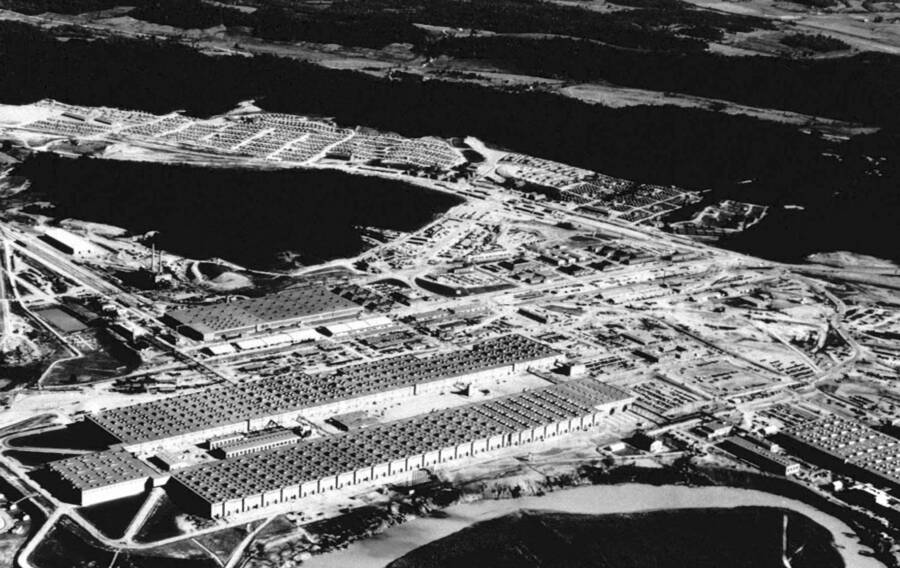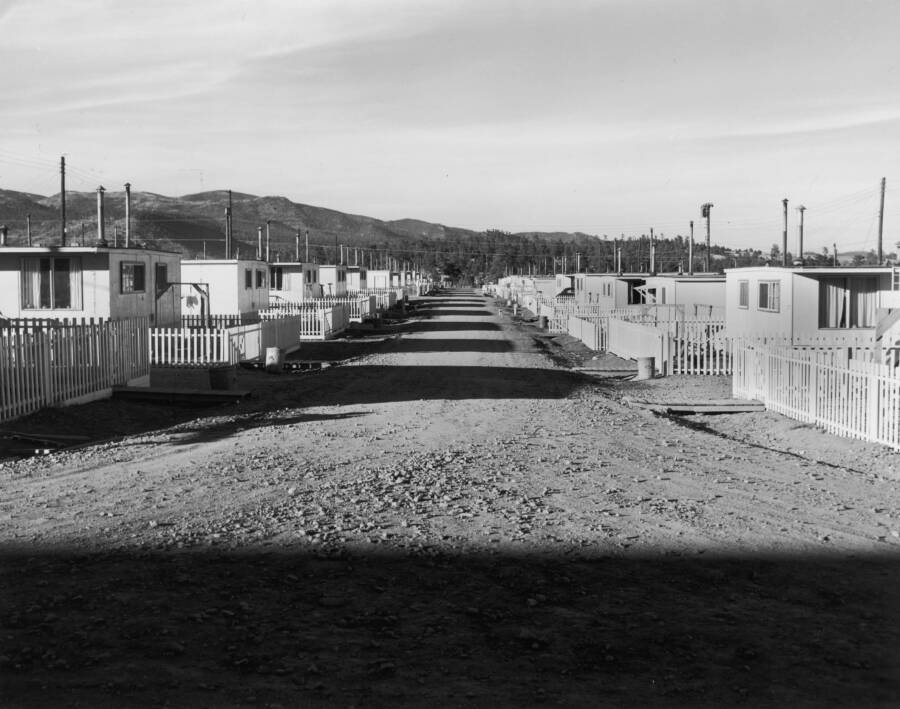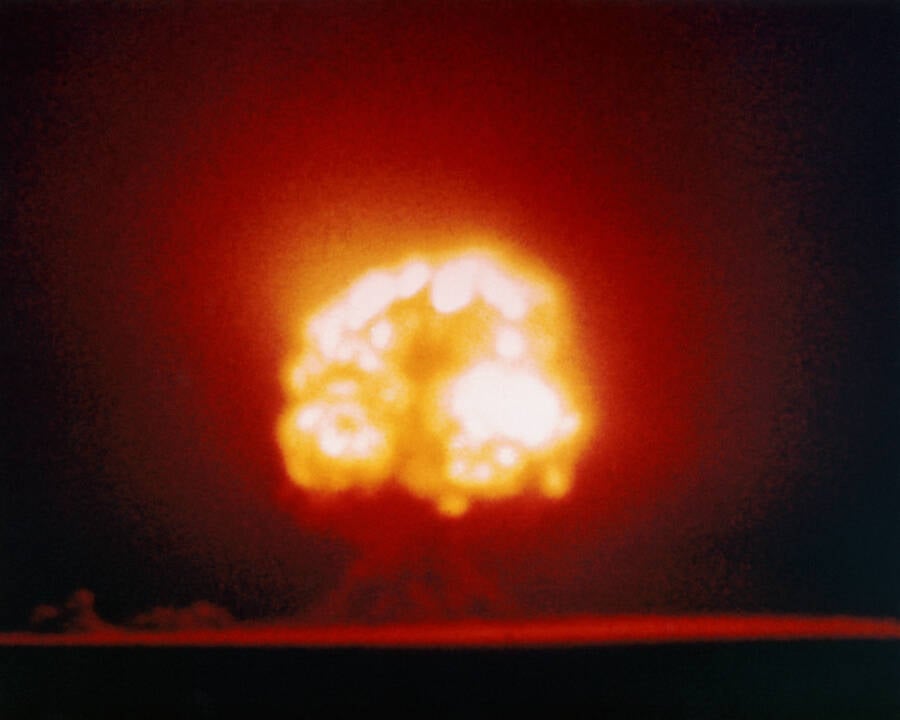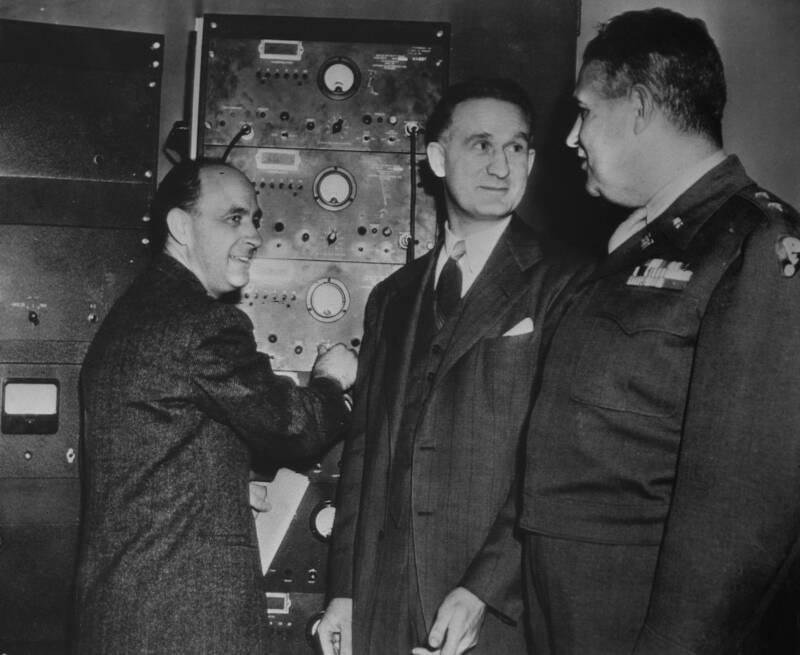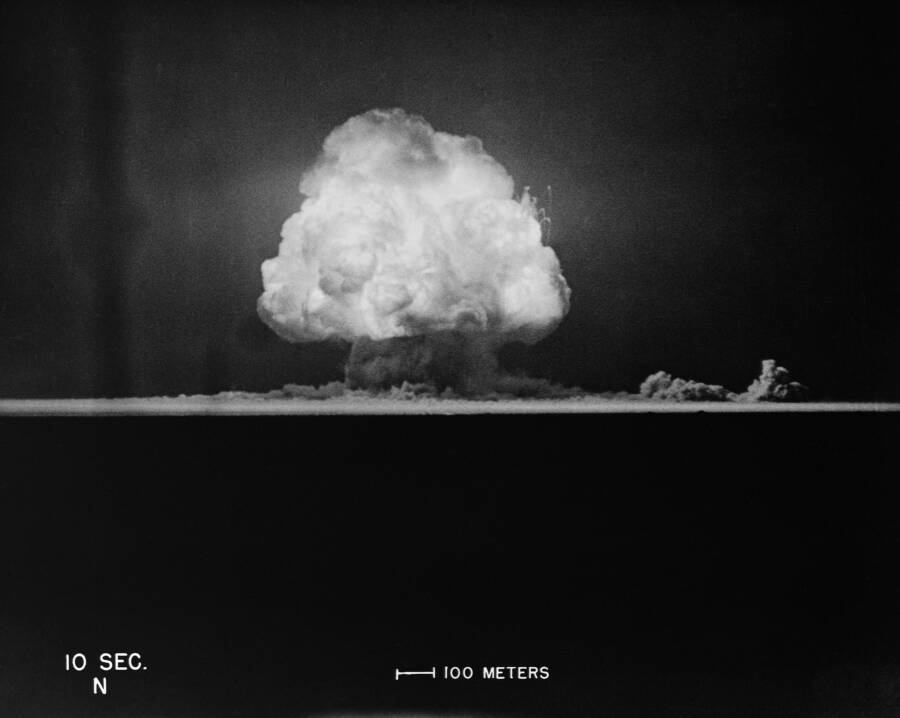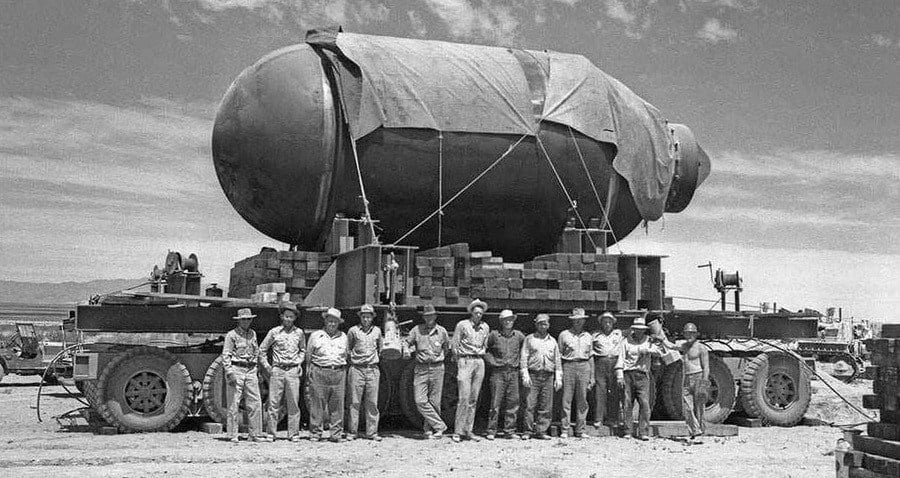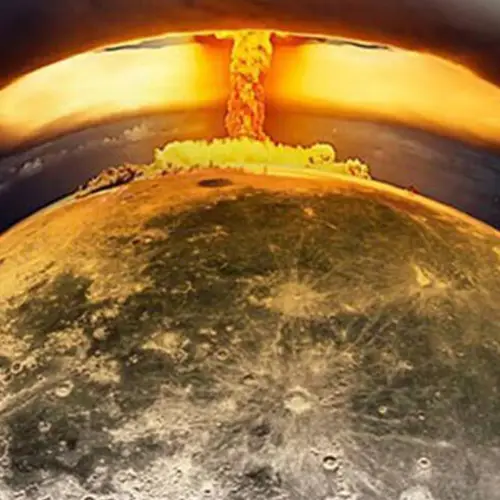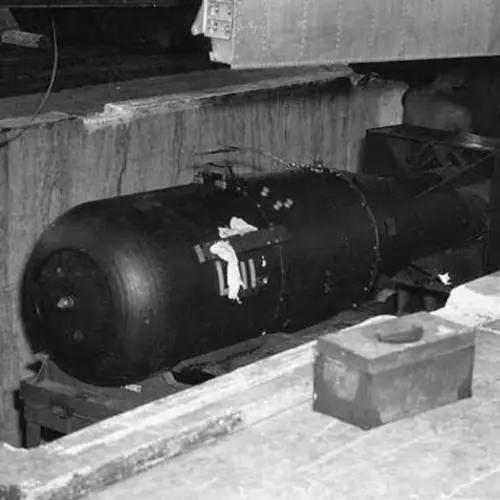From 1939 to 1945, the scientists behind the Manhattan Project raced to develop the first nuclear weapon. The results would change history.
On July 16, 1945, the Manhattan Project proved to be a success: The shockwave of the first-ever-detonated atomic bomb rippled from inside an empty desert in New Mexico all the way out to Albuquerque, destroying everything in its range with a heat hot enough to vaporize steel.
Twenty miles out, theoretical physicist J. Robert Oppenheimer and the architects of the bomb watched the fruition of years of work.
As the sky lit up with a fire brighter than the sun and a mushroom cloud rose up 7.5 miles into the air, the scientists knew that the secret military program to develop the atomic bomb, known as the Manhattan Project, had been carried out successfully.
"We knew the world would not be the same," Oppenheimer would famously say years after the Manhattan Project ended. "I remembered the line from the Hindu scripture, the Bhagavad Gita...'Now I am become Death, the destroyer of worlds.' I suppose we all thought that, one way or another."
https://www.youtube.com/watch?v=jvYu5gBAg5c
Another physicist, Kenneth Bainbridge, who oversaw the first nuclear test, put it a bit more succinctly:
"Now we are all sons of bitches."
The Nazi's Nuclear Weapons Program

Wikimedia CommonsAlbert Einstein and Robert Oppenheimer. Circa 1950.
The Manhattan Project started with a letter on President Franklin D. Roosevelt's desk on Oct. 6, 1939. The Nazis, it warned, had made new breakthroughs in nuclear research that could result in what it described as "extremely powerful bombs of a new type."
"Yours very truly," the letter concluded, "Albert Einstein."
Einstein wasn't a spy, but had a few friends who'd been paying attention to the news.
Two German scientists, in December of 1938, had accidentally discovered that uranium atoms could be split into two radioactive pieces. And two scientists in the U.S., Enrico Fermi and Leó Szilárd, were convinced that the Germans' discovery could be used to create a nuclear bomb more powerful than anything the world had ever seen.
Szilárd and Fermi went to work trying to develop a nuclear reactor on their own, supported only by the resources of Columbia University.
An article in the paper, however, left Szilárd deeply unnerved. Germany, he learned, had taken over Czechoslovakian uranium mines and were barring them from selling their uranium to anyone but the Third Reich.
The Nazis, Szilárd realized, were working on a nuclear bomb of their own. Fearing Roosevelt wouldn't listen to someone like him, Szilárd arranged a meeting with Einstein, explained his fears, and convinced him to sign his name to the letter. He handed the note off to Alexander Sachs, an economist and science buff who was a personal friend of the president's.
Roosevelt finally agreed to meet with Sachs on October 11, a month after the news broke that the Nazis had invaded Poland. He struggled, however, to wrap his mind around the complex science of what they were trying to explain.
"What you are after," he eventually managed to say "is to see that the Nazis don't blow us up."
That was something he could understand. Roosevelt called in Gen. Edwin "Pa" Watson, handed him the papers, and gave the order that started the Manhattan Project:
"This requires action."
The Frisch-Peierls Memorandum
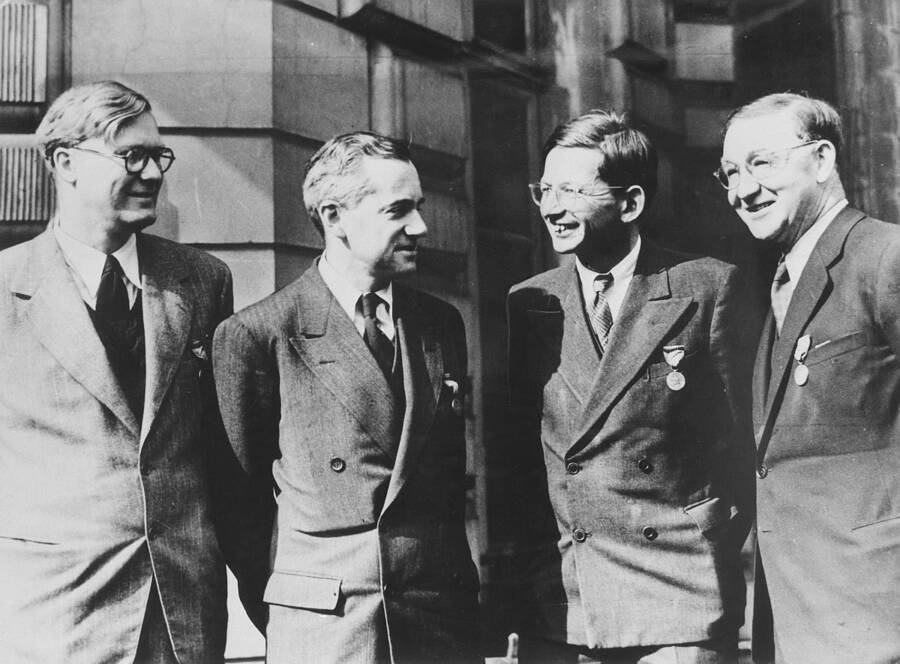
Wikimedia CommonsOtto Frisch and Rudolf Peierls, the two men in the center, made the breakthrough that proved a nuclear weapon was possible. Los Alamos National Laboratory, 1946.
At first, all Roosevelt offered the Manhattan Project was funding, agreeing to purchase uranium and graphite for Szilárd and Fermi's experiments.
Few believed an atomic bomb was possible. Some put the odds of success at 100,000 to 1; even Fermi said that their chances of success were "remote."
The biggest problem was weight.
Even if a nuclear bomb was possible, it was believed that a functional bomb would have to weigh at least 40 metric tons; "such bombs might very well prove to be too heavy for transportation by air," Einstein's letter to Roosevelt read.
No matter how powerful it was, the atom bomb wouldn't do the U.S. any good if they couldn't move it onto enemy soil.
But the Americans weren't the only people with a nuclear program. In England, two German refugees, Rudolf Peierls and Otto Frisch, were hard at work beating their former countrymen to the nuclear bomb, and in March of 1940, they made the breakthrough that would change the project.
You would need to start with a large quantity of uranium and then separate one of its isotopes — uranium-235 — from it. You would only need about a pound or more of the isotope to build a bomb that could blow up an entire city.
"The energy liberated in the explosion of such a super-bomb is about the same as that produced by the explosion of 1,000 tons of dynamite," they wrote in what would be known as the Frisch-Peierls Memorandum. "It will, for an instant, produce a temperature comparable to that in the interior of the sun."
They also warned that a nuclear bomb would emit radioactive material that wind could spread around the world, and they understood exactly how horrific the results could be.
"Even for days after the explosion, any person entering the affected area will be killed."
What Was The Manhattan Project?
When the Frisch-Peierls Memorandum came out, the British had invested more money into nuclear research than the Americans. But after their discovery, the U.S. government ramped up its campaign to develop a nuclear bomb.
By 1943, the US had already invested its first billion dollars into the Manhattan Project – the equivalent of $15 billion today. By comparison, the British – who, three years before, had been in the lead – had only spent £500,000.
The project came to life on Sept. 17, 1942, when Gen. Leslie Groves was put in command.
Before Groves entered the project, the project had struggled to get funding. They were given just $90 million to build four of the first nuclear plants on Earth and struggled to do anything with it. The project was given the same priority rating as a factory building TNT, and so every request they made was put on the back-burner.
Groves changed all of that. Within two days of joining the team, he scared the administration into giving the Manhattan Project the right to be given the highest urgency possible whenever they asked for it.
By Sept. 29th – 12 days after he'd joined the team – Groves had bought 56,000 acres of land in Oak Ridge, Tennessee to enrich uranium.
The farmers who lived there were kicked off their land with little money and without explanation. They had to head out and watch from a distance as their former homes became a "total exclusion area" with some 80,000 personnel.
A private school in Los Alamos County, New Mexico, was seized to create the Los Alamos National Laboratory, where the bomb would be developed. There, a team of the nation's top physicists, including the likes of Enrico Fermi and Richard Feynman. And at their head was Groves' chosen leader: J. Robert Oppenheimer.
Secrecy And Spies Inside The Manhattan Project

Galerie Bilderwelt/Getty ImagesA billboard posted in Oak Ridge. Dec. 31, 1943.
Every single detail of the Manhattan Project was kept quiet. At Oak Ridge, the workers weren't even allowed knowing what they were doing. If they asked questions, they could be kicked out.
As one worker described it: "When the hand moved from zero to 100 I would turn a valve. The hand would fall back to zero. I turn on another valve and the hand would go back to 100. All day long."
In Los Alamos, security was even tighter. Even the scientists whose letter had started the Manhattan Project, Einstein and Szilárd, were all but barred from entering.
Szilárd had some access, but Groves massively limited his role. He was a German citizen and a pacifist, and that made Groves deeply nervous. He gave orders that Szilárd be dismissed from the team and, when he couldn't get the order approved, had the FBI tail him everywhere he went.
Einstein was cut out altogether. The military ruled him "unfit" to "handle highly secret matters in connection with National Defense."
"Professor Einstein is an extreme radical," a military memo declared, connected with "extreme Communist activities."
Even the press was restricted in its reporting; nothing related to atomic fission was allowed on newspapers' pages. When an issue of the Saturday Evening Post released an article that simply discussed the science in general, the military forced them to withdraw it.
Ironically, it was all of this secrecy that ended up catching the Soviets' attention. In 1942, a Soviet scientist named Georgy Flyorov warned Stalin that, for two years, the Americans hadn't written a single word on nuclear fission. The only explanation, he said, was that they were working on the bomb.
"The results will be so huge," Flyorov warned, "that there will be no time to decide who was guilty of the fact that we abandoned this work here in the Union."
And so the Soviets' spying project began.
Einstein never made it into the Los Alamos National Laboratory. But Klaus Fuchs did – and he reported everything he learned back to Soviet Military Intelligence.
The Trinity Test
On July 16, 1945, a nuclear bomb called "Gadget" was transported out into the Jornada del Muerto desert, about 35 miles southeast of the tiny town of Socorro, New Mexico.
After six years of research and experimentation, the Manhattan Project scientists finally created what they believed was a workable nuclear weapon. Now, it was time to test it.
In case things went wrong, the bomb was placed in a containment vessel made out of 214 tons of steel with walls 14 inches thick.
If it didn't work, Groves and Oppenheimer believed, the containment vessel would let them safely recover the plutonium inside. And if it did, the bomb would vaporize the steel.
Nobody knew quite what to expect. Before detonating the bomb, the men of Los Alamos National Laboratory placed bets on just how big the explosion would be. The bomb exploded with 20 kilotons of force, exceeding all predictions.
One of the generals present, Thomas Farrell, did his best to describe the experience:
"The whole country was lighted up by a searing light with the intensity many times that of the midday sun. It was golden, purple, violet, gray and blue. It lighted every peak, crevasse, and ridge of the nearby mountain range with a clarity and beauty that cannot be described but must be seen to be imagined. It was that beauty the great poets dream about but describe most poorly and inadequately."
Oppenheimer, it's said, was strutting like a cowboy in High Noon.
In less than 30 days, the bomb would be put to use. On Aug. 6, 1945, the first atomic bomb was dropped on Hiroshima, and three days later, a second was dropped on Nagasaki. The blasts killed an estimated 105,000 people in the first day and seriously injured another 94,000 more. Another 100,000 died in the few months after the blasts.
The Dawn Of The Atomic Age
To Groves, the Japan bombings were a triumph. In his final address to the Manhattan Project scientists, he praised them as heroes, saying: "You built the weapon which ended the war and thereby saved countless American lives."
But not everyone shared his conviction that this was a victory for peace.
When the bomb fell on Hiroshima, the U.S. army secretly recorded a room full of Nazi scientists to catch their reactions. They were almost relieved.
Werner Heisenberg, who had been working on an atomic engine instead of a nuclear bomb, admitted he was glad Hitler had never gotten his hands on such a powerful weapon.
"If we had all wanted Germany to win the war," Carl Friedrich von Weizsäcker said, "we would have succeeded."
"I don't believe that," Otto Hahn replied. "But I am thankful we didn't succeed."
Einstein was devastated. Hundreds of thousands were dead, and he couldn't see anyone to blame but himself. "Had I known that the Germans would not succeed in developing an atomic bomb," he said, "I would have done nothing."
The project undoubtedly changed the world forever. In 1949, Soviet scientists – using data stolen from the Manhattan Project – developed their own nuclear bomb, modeled after the one that fell on Nagasaki.
This marked the beginning of the Cold War. Even still today, the world lives under the constant threat of nuclear devastation.
Oppenheimer grew to regret what he had done. He would spend the Cold War fighting for an end to the nuclear arms race, fighting so strongly for peace that he would end up facing the House Un-American Activities Committee on charges of being a Communist.
"The atomic bomb was the turn of the screw," Oppenheimer said, reflecting on his legacy. "It has made the prospect of future war unendurable."
Next, see the heartbreaking shadows of Hiroshima and learn about the reckless nuclear tests that followed the Manhattan Project.
